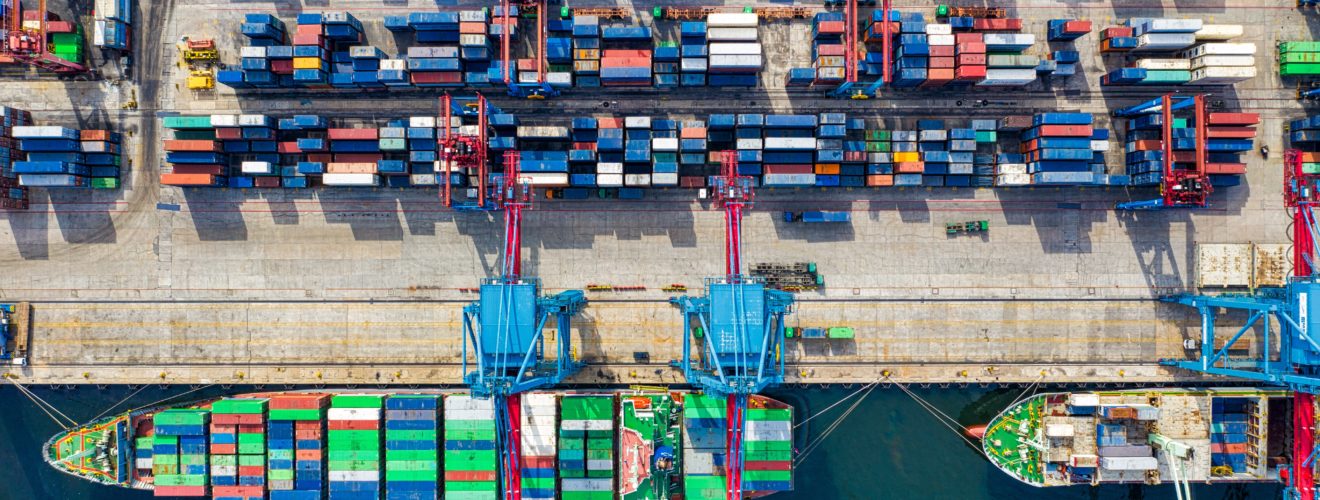Maritime digitalisation and its impact on sustainability

In 2018, 1,076 million tonnes of greenhouse gases were emitted by international shipping. This is a growth of around 9% since 2012 and is projected to increase substantially by 2050 1. For this reason, the maritime industry became a focal point for discussion at the UN Climate Change Conference COP26. Countries deliberated over establishing more ambitious targets with select nations signing a declaration of zero shipping emissions by 2050 2. However, progress towards the reduction of carbon dioxide emissions, or decarbonisation, within the maritime sector is perhaps the industry’s greatest modern-day challenge.
Both academia and industries are investigating novel technologies that will make decarbonisation more feasible. These technologies prioritise energy-saving solutions, renewable energies, alternative fuels, vessel speed reduction, and incorporating digital technologies. However, a transition towards the latter must be accelerated in the sector to enhance operational efficiency and direct shipping along this decarbonisation path.
The maritime sector is a conservative one, disinclined toward change they perceive as a risk to the sector model and not as an opportunity. Digitalisation was initially considered as a potential hazard rather than an advancement. However, practice, as well as parallel industries such as aerospace and railway, has proven that the digital process not only generates innovation, efficiency, and service improvement, but also sustainability. Numerous opportunities arise from emerging technologies that help facilitate the net zero goal. Such opportunities in the maritime sector include the implementation of Internet on Ships, the development and operations of autonomous ships, the increased interest in health monitoring and management tools, and the necessity to guarantee environmental management and resource efficiency.
Of course, these opportunities are only possible when maritime stakeholders become critical of their current strategies. Strategies that need to be adapted in a way that ensures efficient and sustainable operations whilst simultaneously maintaining increased competitiveness. In fact, introducing new and novel technologies can assist in this regard. Smart Maintenance, for example, is fuelled by digitalisation and has undoubtedly proven to be beneficial in enhancing ship Operations & Maintenance (O&M) activities; increasing vessel efficiency while safeguarding cost-effectiveness 3.
Smart Maintenance within the maritime sector can be roughly defined as the analysis of data obtained from multiple sources (e.g., Internet of Ships, crew members availability database, asset inventory lists, and so on) to visualise, automate, and optimise decision alternatives in relation to O&M activities through software systems 4. It determines the condition of the marine machinery through data analysis to promote an improvement in maintenance actions. With an increase in data accessibility through digitalisation, data-driven models can be widely applied, and thus expand within this industrial sector concepts like Smart Maintenance and those akin to it. Smart Maintenance is a field that demonstrated its ability to enhance efficiency, reliability, profitability, and performance of a vessel, while facilitating the emissions reduction all along its operational lifetime 5.
Digitalisation initiatives and data sharing can also provide new opportunities by connecting carriers, ports, people, and infrastructure through emerging technologies; technologies which enable the development of other smart concepts to the same degree of Smart Maintenance. These concepts include Smart Ships, Smart Transportation, and Smart Ports. Traditional ships will be transformed into Smart Ships that are either partially or fully automated. Smart Transportation implements computing, telecommunications, radiolocation, and automation technologies so that performance, management, and security in transportation systems are enhanced. Similarly, a combination of wireless devices, smart sensors, actuators, data centres, and other Internet of Things (IoT)-based port devices, will constitute the main infrastructure of smart ports, thus providing port authorities with more reliable information and new services offered to their clients.
While such concepts may initially sound futuristic, they are starting to become a fact. The port of Rotterdam, for instance, utilises IoT-based sensors for enabling augmented intelligence and generating digital twins, while the Seville port exploits mobile network technology for monitoring goods and traffic in the port in real time 6.
Though not without its challenges (cyber security threats, mid-ocean internet connectivity issues, and unreliable data being notable trials to contend with), the transition toward maritime digitalisation is foreseeable and essential, with the benefits significantly outweighing the difficulties. Given all these emergent technologies, there is no doubt that the maritime industry as we know it today will be near unrecognisable in the coming years. The question is, can digitalisation be the main driving force behind the industry’s more sustainable future?
References
- https://www.imo.org/en/OurWork/Environment/Pages/Fourth-IMO-Greenhouse-Gas-Study-2020.aspx
- https://www.maritime-executive.com/article/cop26-calls-for-zero-emission-shipping-by-2050-and-methane-reductions
- https://www.dnv.com/maritime/insights/topics/digitalization-in-the-maritime-industry/index.html
- https://blog.ifs.com/2016/09/how-to-benefit-from-smart-maintenance/
- https://www.sciencedirect.com/science/article/pii/S0029801820311823
- https://ieeexplore.ieee.org/document/9090272






